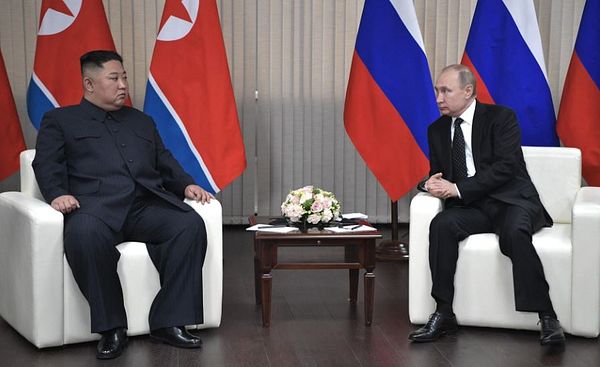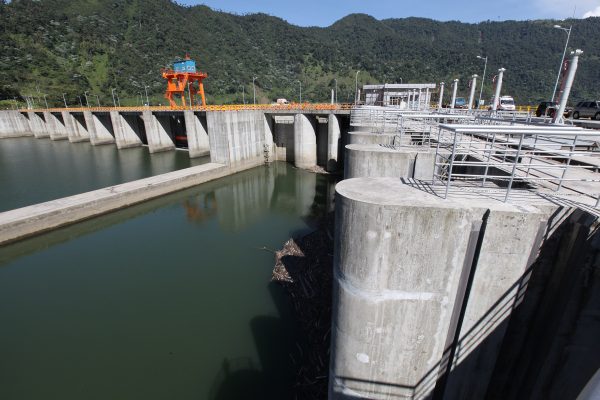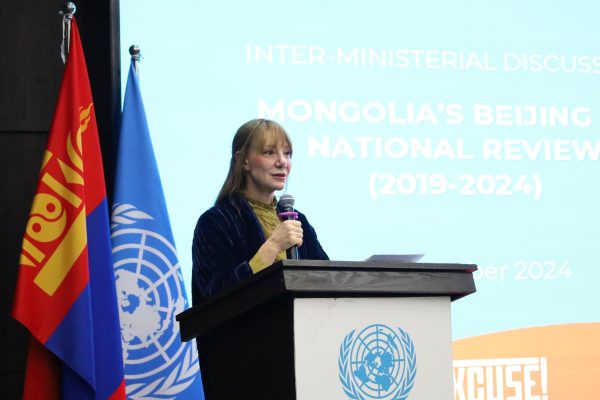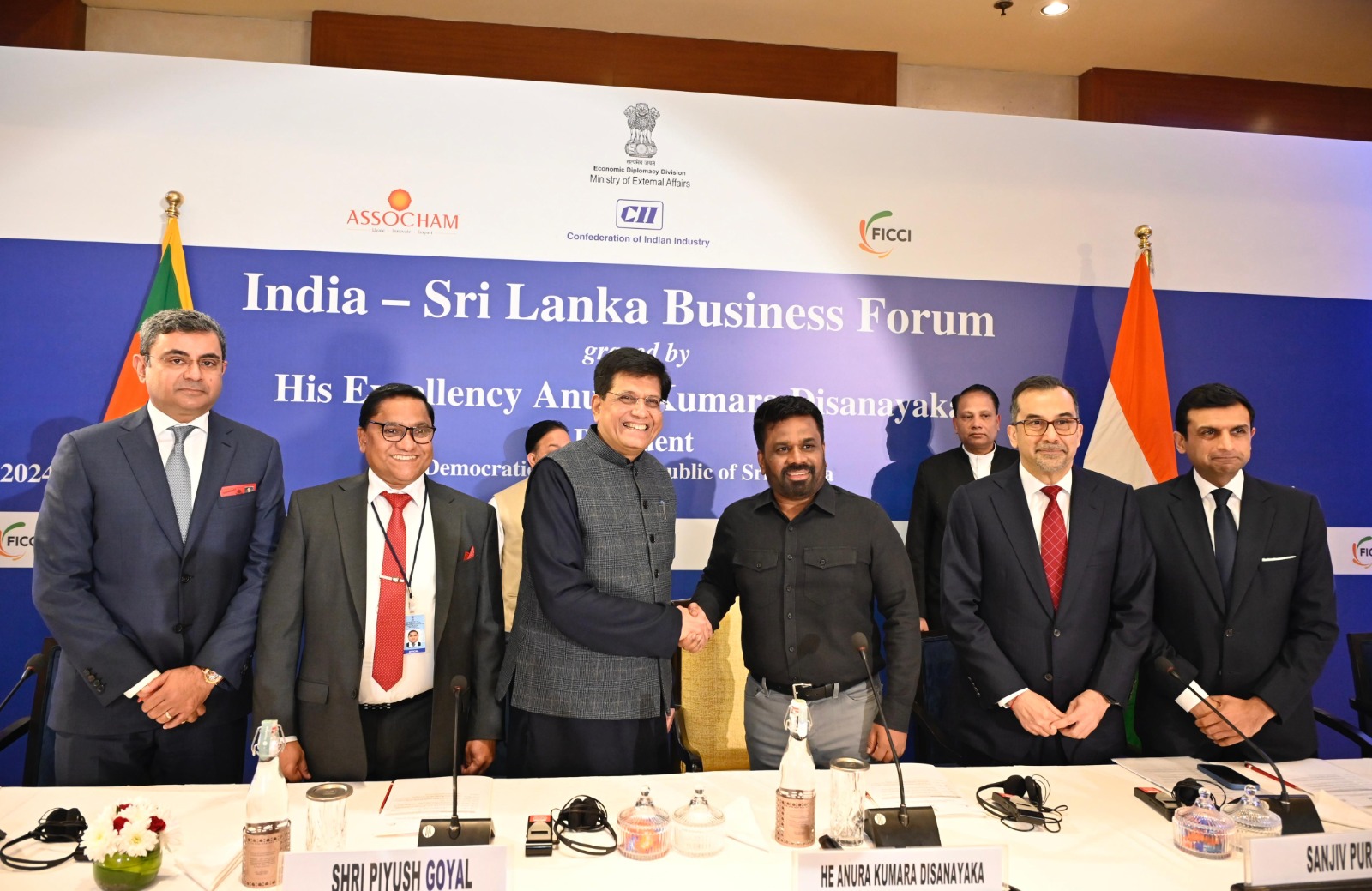On May 9, Russia’s annual Victory Day celebration, North Korean leader Kim Jong Un praised Russian President Vladimir Putin’s war effort in Ukraine. This is the latest sign of the nations’ strengthening ties, following the White House’s March 30 announcement that the Kremlin is once again seeking to trade food and other supplies for munitions from Pyongyang.
In fact, Russia’s full-scale invasion of Ukraine appears to have drawn Pyongyang and Moscow closer together than at any time since the fall of the Soviet Union. While legal and illegal cooperation never stopped, between the two countries’ “deepening rapprochement” and Russia’s pivot east as it loses access to global markets via Europe, it’s increasingly likely Russia will finally build energy pipelines to North Korea, integrate its energy grid, and increase its land-based trade links.
Starting as early as 1998, Moscow, Pyongyang, and Seoul have periodically discussed linking the three nations via railways and liquefied natural gas (LNG) pipelines. In 2017, South Korea’s then-President Moon Jae-in unveiled the New Northern Policy (NPP), “with an aim to strengthen economic and political cooperation with countries to the north of [South] Korea.” By 2018, the policy envisioned cooperation on “gas, rail, electricity, shipbuilding, job creation, the Northern Sea Route, seaports, agriculture, and fishing,” with much passing through North Korea.
While the NNP had some successes, projects generally failed to progress beyond talks. Now, between North Korea’s missile testing and sanctions imposed on Russia, any linkages either through Seoul’s northern neighbor or directly to Russia seem impossible for the foreseeable future.
In the short term, Russia desperately needs money, bodies, armaments, and other supplies to support its ongoing invasion of Ukraine. In the medium to long term, it needs to find markets to replace those it has lost. North Korea is desperate for energy (especially for its nuclear program and military), increased trade, food, medicine, technical expertise, and other forms of sanctions relief. Increasing Russia-North Korea linkages via pipelines, railways, and energy grids would help all parties achieve these goals.
Between international smuggling routes and the resumption of freight train service between the two nations on November 2, Russia has reportedly been receiving large quantities of military supplies from North Korea, including artillery shells, rockets and missiles, anti-aircraft shells, munitions for aircraft, a variety of small arms, uniforms, and workers (including soldiers and police) to assist with trade and (re)construction in Russia-occupied areas of Ukraine and Russia itself. Pyongyang allegedly produced – as opposed to simply transferred – a large number of these materials, in part using raw materials supplied by Moscow.
This support likely began after North Korea recognized the Ukrainian territories annexed by Russia, and was subsequently rewarded with grain and fuel as early as July. Since then, Moscow’s shipments have radically increased. According to Daily NK’s interview with a “high-ranking official” in the North Korean government as well as U.S. officials and other sources, North Korea has been receiving a wide variety of foodstuffs, energy products, raw materials (including lumber), commercial aircraft, commodities, and cash. Over the same period, Pyongyang began preparing to open new trade offices in six regions of Russia. This is all desperately needed as the nation once again faces famine, struggles with reliable electricity, continues to require hard currencies, and seeks any allies and sanctions relief it can find.
There remains a question of whether or not trade with Pyongyang is valuable enough for Russia to sustain it, let alone invest in integrated infrastructure. Citigroup estimated in 2018 that upgrading North Korean infrastructure to be on par with South Korea’s would cost “$63.1 billion in the long term to rebuild… railroads, roads, airports, sea ports, power plants, mines, oil refineries, and gas pipelines.” In turn, however, this would “open up the north’s mineral wealth to exploitation: its deposits of 200 minerals, including the world’s second largest deposit of magnesium and a range of rare earth metals, are thought to be worth approximately $10 trillion.” Russia and China already have pipeline and refinery infrastructure near North Korea, and synergizing resources would be relatively easy.
This highlights another key factor in North Korea-Russia relations: Beijing’s interests. While there are limitations, Beijing has influence over Pyongyang and growing leverage over Moscow, and wishes to expand this. Further, its pursuit of self-sufficiency and sanction-proofing, despite its challenges, may make China both increasingly capable of withstanding penalties for aiding North Korea and Russia, and more incentivized to enhance support for the two states.
To this latter point, China has sent Russia small arms under the guise of rifles for sport, body armor, and a variety of dual-use technologies to support the war effort. It also may soon end its official policy of not supplying Russia with lethal aid. In the meantime, the size of their shared borders and the use of intermediaries such as North Korea and Iran can easily facilitate the de facto termination of China’s “no lethal aid” stance (even if just through funding), at a large scale. Thus, we should not expect Beijing to object to Russia and North Korea expanding their ties, and China could very well encourage or join their infrastructure projects.
As cooperation between North Korea, Russia, Iran, and China continues to increase in parallel to Western sanctions, decoupling, and supply chain diversification, the existing vicious cycle between these trends will likely be amplified. In turn, we can expect a more open partnership between the nations’ Venn diagram of transnational crime and government, enabling each country to evade sanctions, increase trade, and prop up each other’s economies.
Indeed, bolstering the aforementioned developments in Moscow-Pyongyang relations, over the first half of 2023 Beijing, Tehran, and Pyongyang have been vocally working toward expanding their existing economic and security partnerships. These factors, along with whatever benefits North Korea can offer in the form of cheap labor, manufacturing, raw materials, and regional balancing in peacetime or war, could very well justify pipeline, transit, energy grid, military, and other projects between Russia, North Korea, and possibly China and Iran as well.





















Discussion about this post